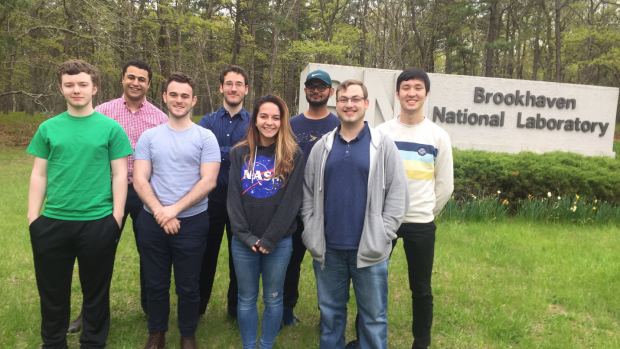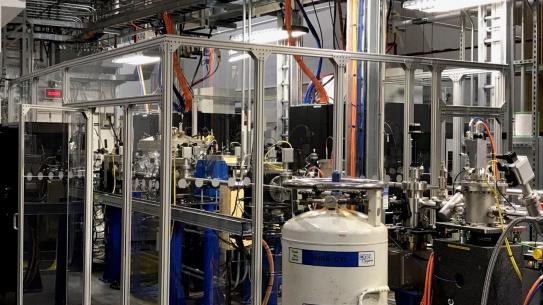Brookhaven or bust
The national lab’s new state-of-the-art 3 GeV electron storage ring was just one of the highlights

Applied Physics students visited Brookhaven National Laboratory on Long Island.
A group of Tandon students from the Department of Applied Physics visited Brookhaven National Laboratory, a facility on Long Island run by the U.S. Department of Energy, in May. There they were greeted by staffer Karl Clarke, who provided a safety briefing; explained the Lab’s mission to address the nation’s energy, environmental, and nuclear challenges; and described some of its historical highlights. That compelling overview alone would have made the trip to Uptown, New York, well worth the time and effort, but the students were treated to much more during their visit.
The group, guided by Brookhaven communications specialist Ricarda Laasch, next toured the new National Synchrotron Light Source (NSLS II), which allows researchers to pursue discoveries in clean and affordable energy, high-temperature superconductivity, molecular electronics, and more. Laasch explained that the facility provided extremely bright radiation from the near ultraviolet to the hard x-ray regions of the electromagnetic spectrum; academic and industrial researchers can use the facility, which is 10,000 times brighter than its predecessor (NSLS I), for a wide range of experiments requiring intense radiation, and additional beamlines were being added regularly.

The visit concluded with an edge-of-your-seat presentation from researcher Stephen Musolino on emergency response preparations for radiological dispersal devices (RDDs or “dirty bombs”). Following the terrorist attacks of 9/11, much research was done to assess the threat posed by improvised explosive devices containing radioactive materials, and Musolino’s presentation included results of many test detonations that provided the basis for response protocols for first responders nationwide.
By the time they returned to Brooklyn, the students had been motivated, inspired, and impressed by Brookhaven’s personnel and equipment — and grateful for a glimpse of a facility most people never get to see.




